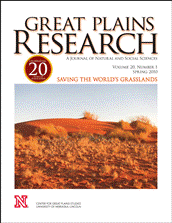Great Plains Studies, Center for

Great Plains Research: A Journal of Natural and Social Sciences (through 2013)
Date of this Version
August 1993
Document Type
Article
Abstract
If you enjoy the West or are interested in or angry about conservationists and conservation biology, this book is a must. The book consists of the papers presented at a conference celebrating the twentieth anniversary of the founding of the Desert Fishes Council and emphasizes fish conservation in the Colorado River and desert southwest. Before water development (and even now) the West was dry and the image of fishes living in the desert an impossible one. Nevertheless, across the spread of the West, one finds canyon-bound rivers, isolated lakes (some with interesting chemistries), wet meadows, and spring heads. In these improbable settings in that arid land, one found some 170 species of freshwater fishes (v. 600 or so east of the Rockies). Most of the thirty extirpated fishes of the U.S. lived in the West and more than half of the surviving western fishes are in some danger of extinction. Western fishes are peculiar because there are so many trouts, suckers, minnows (up to six feet long), and curious little desert pupfishes. By way of contrast, the East abounds with catfishes, bass and sunfish, perches, and pikes. Today, the West has many eastern fishes (imported) competing for scarce resources with a reduced native fauna.


Comments
Published in Great Plains Research 3:2 (August 1993). Copyright © 1993 The Center for Great Plains Studies, University of Nebraska–Lincoln. Used by permission. http://www.unl.edu/plains/publications/GPR/gpr.shtml